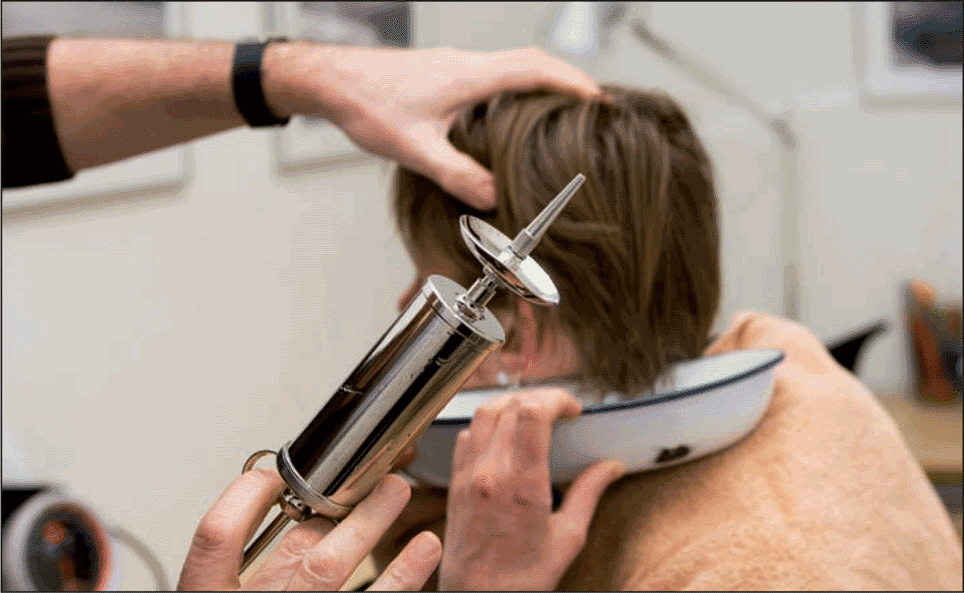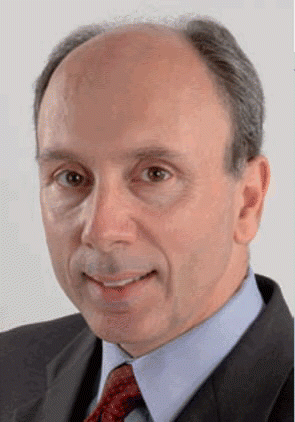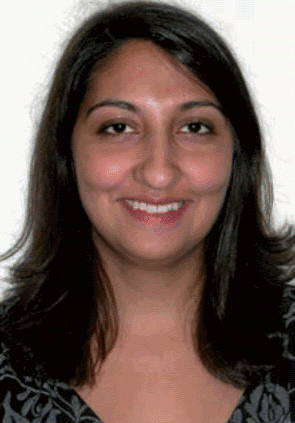In September, the American Association of Otolaryngologists-Head and Neck Surgeons (AAO-HNS) published the first clinical practice guidelines on the removal of impacted cerumen (Otolaryngol Head Neck Surg 2008;139:S1-S21).
Explore This Issue
November 2008The publication, which includes a recommendation for professionals to use cerumenolytic agents, irrigation, or manual removal other than irrigation to extract cerumen, was produced using a methodical and comprehensive evidence-based approach, said Richard Rosenfeld, MD, MPH, a coauthor of the guidelines and Chairman of Otolaryngology at Long Island College Hospital in Brooklyn, NY.
Specifically, the creation of the cerumen document followed procedures detailed in Clinical Practice Guidelines: A Manual for Developing Evidence-Based Guidelines to Facilitate Performance Measurement and Quality Improvement (Otolaryngol Head Neck Surg 2006;135:S1-S28), of which Dr. Rosenfeld was also coauthor. Important elements of this process included topic selection, recruiting panel members, establishing a timeline, literature search, writing recommendations based on clinical evidence, review and final approval.

Topic Selection
The first step to developing clinical practice guidelines is soliciting, selecting, and prioritizing potential topics, said Dr. Rosenfeld.
An AAO-HNS Guideline Development Task Force (GDTF) is in charge of picking topics, explained Jenissa Haidari, MPH, Senior Manager of Quality Improvement at the AAO-HNS in Alexandria, VA.
Members from various other otolaryngological sister societies all participate, said Dr. Rosenfeld. Developing guidelines is a formal process by which members of these various groups can submit an application form stating what potential clinical topics that they think should be addressed and new guidelines would improve public health, he explained.
These groups may then be asked to conduct a formal presentation so the GDTF can further evaluate these topics and assess their importance, said Dr. Rosenfeld. Twenty-two clinicians and three AAO-HNS staff members usually sit on the task force, he added.
The GDTF then prioritizes what topics need clinical practice guidelines, explained Timothy Smith, MD MPH, coauthor of the cerumen publication and Professor of Otolaryngology/Head and Neck Surgery and Director of the Oregon Sinus Center at Oregon Health and Science University in Portland. When deciding what topics to address, the committee looks at a number of factors, including how common the condition is and whether much practice variation exists in treating it, he said.
 Developing guidelines is a formal process by which members of these various groups can submit an application form stating what potential clinical topics that they think should be addressed and new guidelines would improve public health.
Developing guidelines is a formal process by which members of these various groups can submit an application form stating what potential clinical topics that they think should be addressed and new guidelines would improve public health.-Richard Rosenfeld, MD, MPH
Panel Members
Once the GDTF has selected a topic, it designates someone to chair a clinical guidelines panel, which is responsible for developing a document for publication. The chair is chosen based largely on prior experience with guideline development, said Dr. Rosenfeld, adding that he or she must have served as an assistant chair on one or more prior guideline panels. According to the Rosenfeld et al. manual, the chair is ultimately responsible for moving along the guideline development process and keeping the group focused and task-oriented.
The GDTF also selects 12 to 18 people to sit on the guidelines panel. The group generally consists of those GDTF members who have clinical or methodological expertise on the topic chosen in addition to experts from external organizations, said Ms. Haidari.
We try to determine who would be best to sit on the panel-for example, whether it’s emergency medicine doctors, chiropractors, or physical therapists, added Ms. Haidari. We try to have a balance of otolaryngologists and other specialties on the panel.
For cerumen impaction, examples of groups contacted by the AAO-HNS include the American Academy of Pediatrics and the American Geriatrics Society, noted Stephen Wetmore, MD, MBA, Romeo and Maria Lim Professor and Chair of the Department of Otolaryngology at the West Virginia University School of Medicine in Morgantown. In addition to otolaryngologists, pediatricians, and geriatric specialists, panel members included family practice doctors and internal medicine doctors, as well as an audiologist and a nurse, he said.
The type of practitioners involved ultimately depends upon the topic, said Dr. Smith. The group is always multidisciplinary, he said, adding that the document is best constructed with many different views on management.
Timeline
To keep the process moving, the chair ensures that the guidelines panel adheres to a timeline. Developing a manuscript takes about one year from the time of topic selection to the time of publication, said Dr. Smith. So it is a tightly scheduled process that requires a lot of focus, he said. During this time, the panel has two face-to-face weekend meetings, in addition to a minimum of three to five conference calls.
Literature Search
During the research phase of development, the panel conducts a thorough and systematic literature search and an entire body of evidence is assembled, said Dr. Smith. We have a very methodical process that has been carefully developed so that the best evidence is identified and the most up-to-date information is in the guidelines, he said.
The AAO-HNS is refining its process of literature review, noted Ms. Haidari, but the organization currently uses systematic review software. The panel also discusses what databases to search and what key words to use, she added.
Clinical evidence can range from systematic reviews and randomized trials to case series, said Dr. Rosenfeld.
When not much useful information is written about a particular topic, the organization relies on expert opinion and develops a consensus statement rather than practice guidelines, noted Dr. Smith.
 We try to determine who would be best to sit on the panel-for example, whether it’s emergency medicine doctors, chiropractors, or physical therapists. We try to have a balance of otolaryngologists and other specialties on the panel.
We try to determine who would be best to sit on the panel-for example, whether it’s emergency medicine doctors, chiropractors, or physical therapists. We try to have a balance of otolaryngologists and other specialties on the panel.-Jenissa Haidari, MPH
The Writing Process
Once literature is compiled and the evidence is reviewed, the panel defines the disease in a precise way and then decides what related topics to include or exclude in the document, said Dr. Rosenfeld. Members develop a palette of ideas regarding improvements in quality of care and outcomes and then narrow down these ideas down to eight to 12 focal points, he explained.
These focal points eventually become boldface statements in the final manuscript, explained Dr. Rosenfeld. The cerumen document includes 12 such statements, the first being Clinicians should diagnose cerumen impaction when an accumulation of cerumen (1) is associated with symptoms, or (2) prevents needed assessment of the ear, or (3) both. Each focal point or statement is followed by several paragraphs of graded evidence and discussion, added Dr. Rosenfeld.
Each section of the guidelines is written by different panel members, said Dr. Smith. There is a primary author and secondary author of each one, he explained, adding that this ensures multidisciplinary input. The entire panel then reviews the document for accuracy and relevance and grades the recommendations as a group, he explained.
Grading assesses the harms and benefits of following a recommendation or statement based on the level of evidence in the literature, explained Dr. Rosenfeld. We assign a certain level of enthusiasm to each recommendation, he said.
For the cerumen publication, the panel devised a new definition of cerumen impaction and explained how to diagnose it, when to remove it, and in which populations physicians should look for impaction, said Dr. Wetmore. Adults may complain about their ears being plugged, but children and cognitively impaired adults who may have trouble hearing due to cerumen impaction may not be able to express themselves, he said. We produced guidelines with these various types of patients in mind.
The Review Process
Once a draft is completed, it undergoes a review process, said Dr. Rosenfeld. Guidelines are assessed with a Yale Center for Medical Informatics tool called Guide-Line Implementability Appraisal (GLIA). It puts them under a microscope, said Dr. Rosenfeld. It takes apart the boldface statements and supporting text and makes sure information is clear, actionable, and can be implemented, he said.
The in-house GLIA review helps determine what barriers exist to implementing each recommendation statement, explained Ms. Haidari. The panel then arrives at a solution to this barrier or changes the recommendations statement, she said.
After this process, the panel sends the manuscript out for external peer review, said Ms. Haidari. They are sent to peer reviewers with expertise in the clinical field and to the external societies that the guidelines may impact, she said. Close to 20 people may review them.
Their feedback is collated into a giant document and given to the panel chair who then integrates comments into a revised version, which is vetted by the full panel to create the final version, said Dr. Rosenfeld.
Final Approval and Publication
Once the review process is complete, the AAO-HNS board of directors assesses the document for final approval, said Ms. Haidari. The organization submits the guidelines for publication in the academy journal and to the National Guideline Clearinghouse for posting on its Web site.
Other Guidelines
In addition to cerumen impaction, the AAO-HNS has developed practice guidelines for acute otitis externa, otitis media with effusion, and adult sinusitis.
The American Medical Association used the acute otitis externa and otitis media with effusion guidelines to help develop performance measures, noted Dr. Rosenfeld, adding that the association is also taking into account the adult sinusitis guidelines for the same purpose. We hope the cerumen guidelines will be considered, he added.
The AAO-HNS will publish clinical recommendations on benign paroxysmal positional vertigo in November 2008 and on dysphonia in 2009, said Dr. Rosenfeld.
Because many practitioners other than otolaryngologists treat conditions such as adult sinusitis, otitis externa, otitis media with effusion, and cerumen impaction, the AAO-HNS has taken an important leadership role in developing clinical practice guidelines, concluded Dr. Smith.
©2008 The Triological Society
Leave a Reply